#ItalianFilm
Photo
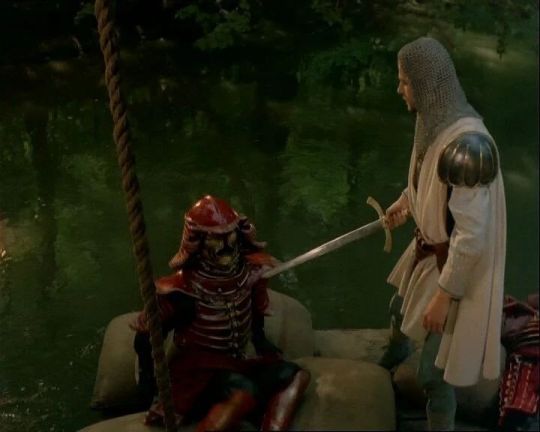
Of kinghts, Heroes, and Gallants Working in Lamberto Bava's Fantaghiro as Romualdo with Alessandra Martines #ChristopherStewart #ShaneBriant #AlexHydeWhite #kimrossistuart #nicholasrogers #alessandramartines #JonathanBrandis #actorslife #backstageforlife #fantasy #fantaghiro #lambertobava #romualdo #italianfilm #giallo #fantasyfilm #👑#🎭 https://www.instagram.com/p/ClpQp6MMD64/?igshid=NGJjMDIxMWI=
#christopherstewart#shanebriant#alexhydewhite#kimrossistuart#nicholasrogers#alessandramartines#jonathanbrandis#actorslife#backstageforlife#fantasy#fantaghiro#lambertobava#romualdo#italianfilm#giallo#fantasyfilm#👑#🎭
2 notes
·
View notes
Text




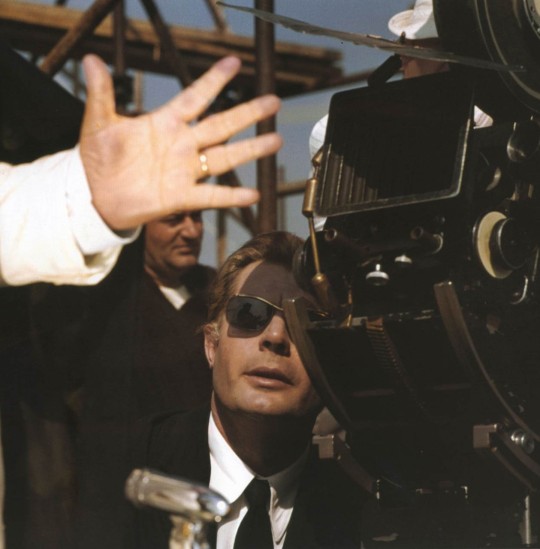
BEHIND-THE-SCENES SHOTS OF AN ARTHOUSE CLASSIC -- A SIXTY-YEAR-OLD MASTERPIECE IN 2023.
PICS) INFO: Spotlight on European cinema greats Anouk Aimée & Marcello Mastroianni✝ in behind-the-scenes shots of Federico Fellini's surrealist classic "8½" (1963). Archivio Storico del Cinema, AFE. 📸: Paul Ronald.
OVERVIEW: "As if by magic, Federico Fellini’s legendary black and white film 8 ½ makes an appearance in colour, immortalised by Paul Ronald. The producers asked him to photograph scenes in black and white. But Ronald had two hasselblad cameras, and he loaded the second one with a roll of colour film, not knowing what he would do with it.
Colour reveals all. It underscores the aesthetic choices’ resolute modernity, from the sets to Piero Gherardi’s costumes, the eminently contemporary figures of Anouk Aimée and Claudia Cardinale, and Marcello Mastroianni’s lecherous poses. It takes us out of the film’s rigorous structure, brings us behind the scenes and shows us the festive mood that prevailed on Fellini’s set."
-- LES RECONTRES DE LA PHOTOGRAPHIE, "Fellini, 8½ Colour Photographs by Paul Ronald, c. 2015, by Abbaye de Montmajour
Sources: www.rencontres-arles.com/en/expositions/view/354/fellini-8-colour, X, Repubblica Bologna, & The Eye of Photography.
#8½#8½Film#ArthouseCinema#Cinema#Photography#FedericoFellini#Fellini#MarcelloMastroianni#AnoukAimée#Arthouse#Avantgarde#SurrealistFilm#ItalianCinema#EuropeanCinema#1960s#WorldFilm#ItalianFilm#VintageStyle#PaulRonald#Fashion#EuropeanFilm#Avant-gardeCinema#ItalianStyle#Sixties
1 note
·
View note
Text
Netflix is now on LingoPie! Watch TV and learn Italian!
Image Credit: Studentessa Matta Original iIllustration
Netflix è LingoPie stanno collaborando! Guarda la TV e impara l’italiano!
Netflix and LingoPie are joining up! Watch TV and learn Italian!
Trasforma le tue lezioni di binge-watching in avventure di apprendimento linguistico. Turn your binge-watching sessions into language-learning adventures.
Ehi, ragazzi! Grandi notizie! Netflix ha…

View On WordPress
0 notes
Photo

In Episode 97, we discuss this comedy-drama Mediterraneo, that takes place during World War II about a small company of Italian soldiers that are stationed in isolation on a Greek Island which won for Best Foreign Language Film in 1992. Starring Diego Abatantuono, Claudio Bigagli, Giuseppe Cederna, Claudio Bisio, Luigi Alberti, Ugo Conti and Vana Barba. Directed by Gabriele Salvatores, Written by Enzo Monteleone and released in Italy on January 31, 1991. #1991movies #1991 #1991movierewind #1992oscars #bestforeignlanguagefilm #Mediterraneo #gabrielesalvatores #enzomonteleone #diegoabatantuono #giuseppecederna #ugoconti #vanabarba #torontofilmfestival #rogerebert #siskelandebert #90smovies #wwii #italianfilm https://www.instagram.com/p/CoQfmlKOCwE/?igshid=NGJjMDIxMWI=
#1991movies#1991#1991movierewind#1992oscars#bestforeignlanguagefilm#mediterraneo#gabrielesalvatores#enzomonteleone#diegoabatantuono#giuseppecederna#ugoconti#vanabarba#torontofilmfestival#rogerebert#siskelandebert#90smovies#wwii#italianfilm
0 notes
Photo
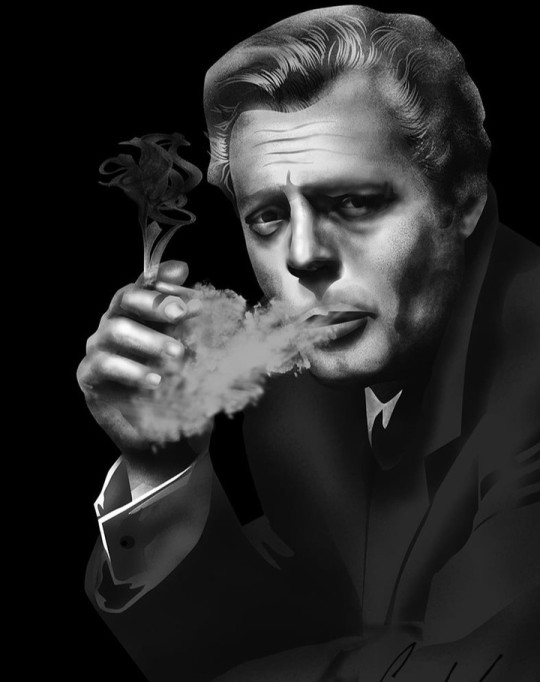
Marcello Mastroianni /September 28, 1924 - December 19, 1996/ #cardula #marcellomastroianni #film #actor #italianfilm #iconic #movie https://www.instagram.com/p/CmV2_Wpj2yP/?igshid=NGJjMDIxMWI=
0 notes
Video
youtube
📽🎞Learn italian with movies- Vieni avanti cretino - Lino Banfi 😂
📽🎞Learn italian with movies- Vieni avanti cretino - Lino Banfi 😂
Il breve video da cui impareremo l’italiano oggi è tratto dal film Vieni avanti cretino (1982).
https://youtu.be/tgZPF6xVdV4
In questo spezzone, Pasquale Baudaffi interpretato da Lino Banfi (il protagonista), si reca in uno studio dentistico appena aperto, che però Pasquale crede essere ancora ciò che era prima, ossia una casa d'appuntamenti da lui frequentata prima di venire arrestato e trascorrere un lungo periodo in prigione.
Lì incontra un Ingegnere (Gigi Reder), cliente dello studio con seri problemi dentali.Il film è ambientato a Roma.
Pasquale Baudaffi è un detenuto appena uscito dal carcere romano di Regina Coeli; ad accoglierlo troverà il cugino Gaetano, impiegato presso un ufficio di collocamento, che tenterà di aiutarlo coinvolgendolo in un percorso di reinserimento onesto nella società, e proponendogli a tal fine svariate attività lavorativa.
Da questa premessa parte una serie di scene a dir poco esilaranti; in primo luogo lo sventurato Baudaffi si reca presso una casa d'appuntamenti (un bordello) che frequentava prima del suo arresto, che nel frattempo però è divenuto uno studio dentistico, ma lui non se ne accorge.
Registratosi e in attesa del suo turno, avrà un discorso surreale e pieno di doppi sensi con un paziente, un ingegnere loquace e invadente con il quale avrà uno scontro quasi fisico che lo porterà ad abbandonare il locale urlando.
Eh sì perché il nostro caro Pasquale è sempre convinto di trovarsi in un “casino”, mentre il suo povero interlocutore gli parla del suo straziante mal di denti.
Qui l’umorismo nasce dai doppi sensi e c’è molto, molto da imparare!
In descrizione su YouTube trovi i singoli contenuti linguistici trattati e il punto nel video in cui trovarli.
0 notes
Photo
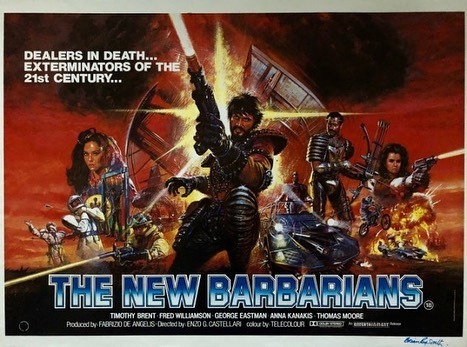
THE NEW BARBARIANS 1983 action/sci-fi #15 of 500 In 2019, a nuclear holocaust reduces the world to a handful of starving survivors. Two wandering mercenary‘s find themselves assisting a group of pilgrims in their battle against the ruthless Templars, a vicious gang bent on cleansing the earth of the rest of humanity. Equal parts Mad Max, and Death Race 5000, this is an interesting watch for Fred Williamson completionists, but definitely not for the easily triggered. The film itself has decent pacing and humor along with its action, but production quality definitely lands it directly in grindhouse territory. If you can look past the leather clad bowling ball sized shoulder pads of the Templars’ costumes, you might enjoy this little bit of B-movie insanity. Giancarlo Prete - Scorpion Fred Williamson – Nadir George Eastman – One Anna Kanakis - Alma Ennio Girolami - Shadow Venantino Venantini - father Moses Massimo Vanni - Mako Giovanni Frezza - Young mechanic Iris Peynado - Vinya #500filmchallenge #thenewbarbarians #italianfilm #actionmovies #fredwilliamson #cultclassic #grindhouse #scifi #podcast #filmreviewpodcast #filmreview #podcastlife #podcasting #podcasts (at Haverhill, Massachusetts) https://www.instagram.com/p/CdLWTdOuNSU/?igshid=NGJjMDIxMWI=
#15#500filmchallenge#thenewbarbarians#italianfilm#actionmovies#fredwilliamson#cultclassic#grindhouse#scifi#podcast#filmreviewpodcast#filmreview#podcastlife#podcasting#podcasts
1 note
·
View note
Photo

I haven't seen this Fellini film. DVR time. GINGER AND FRED (1986), tonight at 2:15 AM on #TCM. #TCMImports #newtome #ItalianFilm #Internationalfilm #fellini #stayuplate https://www.instagram.com/p/CdBH0mbrp6M/?igshid=NGJjMDIxMWI=
0 notes
Text


pigsty 1969
dir. Pier Paolo Pasolini
11 notes
·
View notes
Text
Movies and Tea #65 - Wild Beasts
Movies and Tea #65 - Wild Beasts #Podcast #WildBeasts #CreatureFeatures #ItalianFilm
Movies and Tea #65 – Wild Beasts

View On WordPress
0 notes
Photo
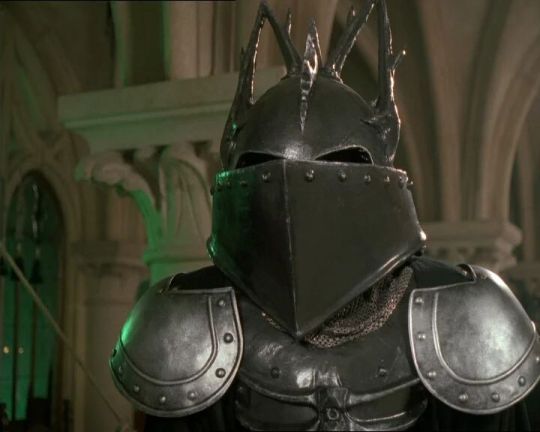
Of kinghts, Heroes, and Gallants Working in Lamberto Bava's Fantaghiro as Romualdo with Alessandra Martines #ChristopherStewart #ShaneBriant #AlexHydeWhite #kimrossistuart #nicholasrogers #alessandramartines #JonathanBrandis #actorslife #backstageforlife #fantasy #fantaghiro #lambertobava #romualdo #italianfilm #giallo #fantasyfilm #👑#🎭 https://www.instagram.com/p/ClkOEUrtQik/?igshid=NGJjMDIxMWI=
#christopherstewart#shanebriant#alexhydewhite#kimrossistuart#nicholasrogers#alessandramartines#jonathanbrandis#actorslife#backstageforlife#fantasy#fantaghiro#lambertobava#romualdo#italianfilm#giallo#fantasyfilm#👑#🎭
1 note
·
View note
Text
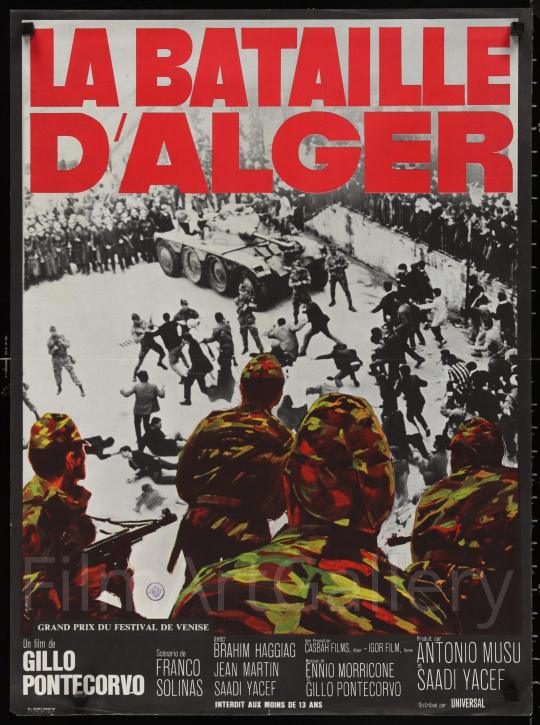
"ACTS OF VIOLENCE DON'T WIN WARS. NEITHER WARS, NOR REVOLUTIONS."
PIC INFO: Resolution at 3170x4255 -- Spotlight on am original French movie poster design for "The Battle of Algiers" (1966), controversial docudrama on the French-Algerian War from director Gillo Pontecorvo (film was produced in 1966 but banned in France until 1971).
"Acts of violence don't win wars. Neither wars, nor revolutions. Terrorism is useful as a start. But then, the people themselves must act. That's the rationale behind this strike: to mobilize all Algerians, to assess our strength. It's hard to start a revolution. Even harder to continue it. And hardest of all to win it. But, it's only afterwards, when we have won, that the true difficulties begin. In short, Ali, there's still much to do."
-- BEN M'HIDI to Ali la Pointe (screenplay by Franco Solinas)
Sources: https://filmartgallery.com/products/the-battle-of-algiers-4961 & https://m.imdb.com/title/tt0058946/quotes/?ref_=tt_trv_qu.
#TheBattleofAlgiers#BattleofAlgiers#60s#WorldCinema#Docudrama#WorldFilm#ItalianCinema#WarFilms#WarMovies#MoviePoster#PosterArt#FrenchAlgerian#ItalianFilms#French-AlgerianWar#ForeignFilms#ItalianNeorealistCinema#ItalianNeorealism#GilloPontecorvo#La battaglia di Algeri#Maʿrakat al-Jazāʾir#AlgerianWarforIndependence#Sixties#Cinema#AlgerianWar#AlgerianHistory
0 notes
Photo

7 donne e un Mistero: New Netflix Italian Murder Mystery If you want to start the New Year off with a fun Italian murder mystery with a dark comedic twist, look no further than Netflix’s new offering “7 donne e un mistero” (Seven Women and a Murder), directed by Alessandro Genovesi. The film features a star-studded lineup of actresses. For a more contemporary crowd, the film has a “Knives Out Murder Mystery” vibe. For fans of vintage mysteries, it is reminiscent of a lighter version of Agatha Christie’s “And then there were none.” (1965 Film title: Ten little Indians.) I especially loved the scene in which the women ate Christmas dinner. Hilarious! Molto divertente! Nuovo post al blog StudentessaMatta.com leggi la recensione. New on the StudentessaMatta blog: Read the Matta review. #italianFilm #7DonneMistero #7WomenandAMurder #italianImmersionPractice #ItalianCinema #NetflixItalianOriginal #SabrinaImpacciatore #OrnellaVanoni #MicaelaRamazzotti #LuisaRanieri #StudentessaMatta #learnItalian https://www.instagram.com/p/Cm7tXRfMN9F/?igshid=NGJjMDIxMWI=
#italianfilm#7donnemistero#7womenandamurder#italianimmersionpractice#italiancinema#netflixitalianoriginal#sabrinaimpacciatore#ornellavanoni#micaelaramazzotti#luisaranieri#studentessamatta#learnitalian
0 notes
Photo

Il Conformista
Bernardo Bertolucci 1970
#il conformista#bernardo bertolucci#bertolucci#jean louis trintignant#stefania sandrelli#gastone moschin#cinema#italian cinema#italianfilm#settima arte
29 notes
·
View notes
Photo

- I had long hair …2 weeks ago … - j ai eu les cheveux longs …il y’a 2 semaines … I ll show you soon the video Bientôt la vidéo …. …. NO RETOUCH … you can tell 😂 Thanks to my Italian working familly ⚠️ private mid November ⚠️ ⚠️ ce compte sera privé mi nov ⚠️ . @romeov.conte @enricoloverso @fope_gioielli @91edoardo @valo87 @luca_righeschi_photographer @auroradamanti86 @majormodelsmilan @maristellabecu . . . . . #italianluxury #italianstyle🇮🇹 #italianfilm #italianfashion #frenchactor #frenchmalemodel #jonathanpaulcaillat #jewelry #eleganza (à Tenuta San Rossore) https://www.instagram.com/p/CVf69pVtxwF/?utm_medium=tumblr
#italianluxury#italianstyle🇮🇹#italianfilm#italianfashion#frenchactor#frenchmalemodel#jonathanpaulcaillat#jewelry#eleganza
2 notes
·
View notes
Text
Alluring or Meaningless? - The Ending of Sorrentino’s La Grande Bellezza (The Great Beauty)
Renowned director Paolo Sorrentino's classic 'La Grand Bellezza' mixes the pathos of life with philosophical ideas, but does its ending even have the desired meaning that audiences were expecting?

Giusi Merli in ‘La Grande Bellezza’
Paolo Sorrentino’s renowned 2013 Italian modern classic, ‘La Grande Bellezza’ (The Great Beauty) was certainly one for the critics to praise highly, yet there is a certain quality to its largely masterful storytelling that can see it lacking in true depth. Where much of the film’s entirety soars, its value seems to get lost amongst its artsy attempt to create meaning, where it really can appear as overdone and quite hollow. If we look at the last 30 minutes of Sorrentino’s work, we as an audience can certainly debate whether there is awe-inspiring significance or just overplayed rhetoric in the ending of La Grand Bellezza. Where whimsical characters and moments are introduced, viewers can be very easily swept up in Sorrentino’s foreign fairytale, where it really can be deemed as just pretentious. Yet, this point is far from black and white, as ‘La Grande Bellezza’s’ meaning is up to the audience to interpret, still making it a favoured and beloved work.
Italian director Paolo Sorrentino’s works have garnered praise for their dramatic and striking visuals, as well as their convoluted plots. He has been compared to Federico Fellini, and certainly does seem to take inspiration from the 1960s film icon. But Sorrentino is certainly no copy of Fellini, as his culturally inspired films do reach audiences well. Yet where The Academy Awards gave it the win for Best Foreign Language Film, and where critics seem to kiss it’s feet, this doesn’t always mean that it is altogether an expert piece of cinema. You can say that the beauty of film is that it can be totally subjective, which, in hand, is what makes such great art. So us as an audience can ask whether we view the film as more so pretentious or philosophical?
‘La Grande Bellezza’ follows former writer & popular socialite Jep Gambardella, a sort of philosophical muse for Sorrentino. As Jep’s life in Rome is consumed by materialism, it isn’t until his 65th birthday that he begins to look inwards. This leads him on a search for ‘the great beauty’, which has him relishing in nostalgia and existential simplicity, audiences closely following behind on that journey with him. The greater part of Sorrentino’s film does successfully have us questioning our place in the world, and where our values lie. Through comparing and contrasting the superficial high life with what’s most important to humanity, we are reminded of our own perspectives on what does and should hold the most substance or meaning.
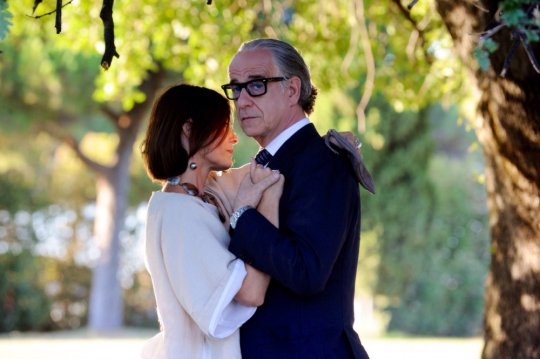
Toni Servillo in 'La Grande Bellezza'
Yet as Jep has wandered around searching in different areas for beauty in truth and philosophy, his defining moment seems to be towards the end of the film, when he is introduced to Saint, Sister Maria. As Jep is told that she had ‘read his novel & loved it’ years before, we are left open to interpretation to who this Saint may be. Yet the answer in itself is somewhat disappointing. Again, it is not to say that the ending of Sorrentino’s film is wrong or terrible, but is surely very thought provoking.
This moment starts in the last thirty minutes of the film, and we are never given a backstory to Sister Maria when or before she is introduced. And she is introduced, literally, on a pedestal. As she sits there in silence, she wears a dusty, grey-blue nun’s habit, her olive skin lined with deep wrinkles, and expression truly dried out. Members of high society kneel to her, kissing her hands. In the chapel that she sits, there are priests, monks, African tribesmen and all in all, only established figures flocking to her, their eyes wide in honour of her presence. It is as though these figures are all awaiting an answer that they cannot find, and seek out from Maria. Though she is established as a wise old prophet with supposed life-changing aid, what makes her so respectable? She appears as though she has lived three lifetimes and has ‘only granted three interviews in all her life’, yet this alleged messiah altogether utters very little meaning. Sister Maria’s introduction has her appearing as a monumental figure, mostly due to the filmmaking aspects of the scene. In the chapel, lit with a chiaroscuro inspired light, along with medieval Roman Catholic music echoing throughout, with the purpose of warming our hearts. Contemplative looks from across the room, including a black priest, may be there to show the diversity that Maria is surrounded by, as those across the globe seem to adore her. The only interpretation gathered is that Sister Maria is an attempt to create a grandiose moment to close out the film in a profound sense. Yet what I’d gathered of this Saint, is that she lives so austerely that Sorrentino’s ending becomes muddled and pretentious.
As previously mentioned, we are never given a backstory to Sister Maria, but maybe that is the beauty of it that Sorrentino was trying to portray. This icon in the film is looked up to for her granted simplicity. But by portraying something so obscure, Sorrentino’s work doesn’t always appear as interesting, but as an attempt to do so. Is it her goodness or her stripped back way of living that those aspire to? And why does it need to be members of high society that only seek her advice? Wouldn’t Sorrentino’s inclusion of ordinary citizens make it all the more realistic, or relatable and grounded, rather than once again getting caught up in something so grand?
Her grandeur is never explained, to which we can be inspired or simply baffled by the mystery, seeing it as something that creates interest, or just remains pretentious. Yet even if her significance was explained, and made this supposed icon as meaningful as someone like the Pope or Mother Teresa, aren’t we supposed to be inspired by the ordinary and the beauty in simplicity. Isn't the point of 'La Grande Bellezza' to celebrate the simple things in life, rather than an established, worshipped figure? The portrayal of this kooky character tries to make a point towards being so well grounded, that it is absurd. As she speaks to Jep, she asks 'Do you know why I only eat roots?', to which Jep asks why, her response following as, 'Because roots are important'. Now Sister Maria's actions line up with her values and grounded nature, as she genuinely decides to eat roots. This can be seen by some as profoundly inspiring, but is altogether quite a weak attempt to deliver an overly-artistic message. And sure, it isn't all pompous, as there is a great reference to the Catholic influences in Italy and the holy hierarchy of Rome & it’s art. But it is the aureate expression doesn’t sell it as being moving, but is instead simply too showy.
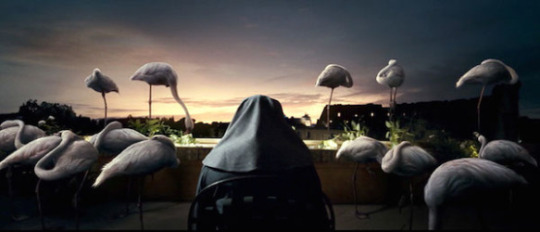
When sat down at dinner with Jep and his fellow members of Roman high society, Maria is slouching at the head of the table with a vapid expression. The attempt at meaning that Sorrentino has so clearly tried to create is open to interpretation, yet it can be said that this is not one of the his finest writing moments. Sister Maria does not speak a word, and whenever she does, it is a brooding comment that is supposed to hold substance, but instead can be regarded as pretentious. The moment she lifts her head to comment on Jep's novel, all eyes are so enthusiastically on her. Sister Maria does not sleep in a bed, as she finds Rome’s 5 star Hassler hotel, ‘uncomfortable’. Her perspective on life can be seen as purely existential and somewhat nihilistic, or greatly generous. As she works alongside the sick and supports the Third World, her abandonment of any enjoyment and subscription to poverty has us question our place. Is someone really so empathetic that they’ll refuse any comfort, because others are worse off? Again, Sorrentino does succeed in communicating a message that has us asking questions like this, yet the point is too greatly emphasised through the worshipping and dramatically overdone expression of this holy character.
As Jep focuses on switching his hedonism for eudaemonism, his perspective on the finer things in life is the things he used to have, leading him to relish in nostalgia. Sister Maria seems to be an exaggerated symbol of his changing philosophy, as well as a turning point for him to once again write, after abandoning any such creativity for decades.
Something in meeting Sister Maria has Jep retuning to Giglio Island to report on a shipwreck, again, quite symbolic of Jep’s career position, having not written a novel in 40 years. Here, he remembers his first meeting with his first love, to which inspires him to write again. Apparently Sister Maria is the bridge between Jep’s despair & newfound hope.
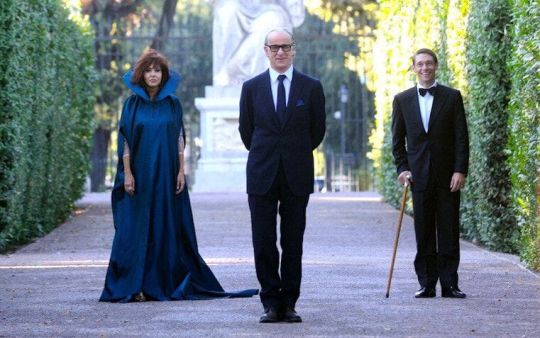
Paolo Sorrentino's expertly expressive film is a no doubt a masterful passion project that communicates the pathos and joy of the human condition, impacting audiences greatly. Yet Sorrentino's attempt to create something meaningful to close out an already wonderful film filled it with more vanity than it needed. It is an entirely subjective work that involves the audiences thought and we can all interpret it how we see it, which is assuredly a good thing. However, Sorrentino’s quite bombastic ending was just a questionable cliffhanger and didn't line up with the greatness that the first two hours of 'La Grande Bellezza' provided. Though a fantastic feature, Paolo Sorrentino seemed to get too lost in portraying a message so obscurely overdone, that it had somewhat lost it's original meaning.
visit at: dreamsofthescreen.com
#cinema#writer#blogger#bloggersoftumblr#italianfilm#philosophy#cinemaisnotdead#cinematography#worldcinema#italiancinema#la grande bellezza
3 notes
·
View notes